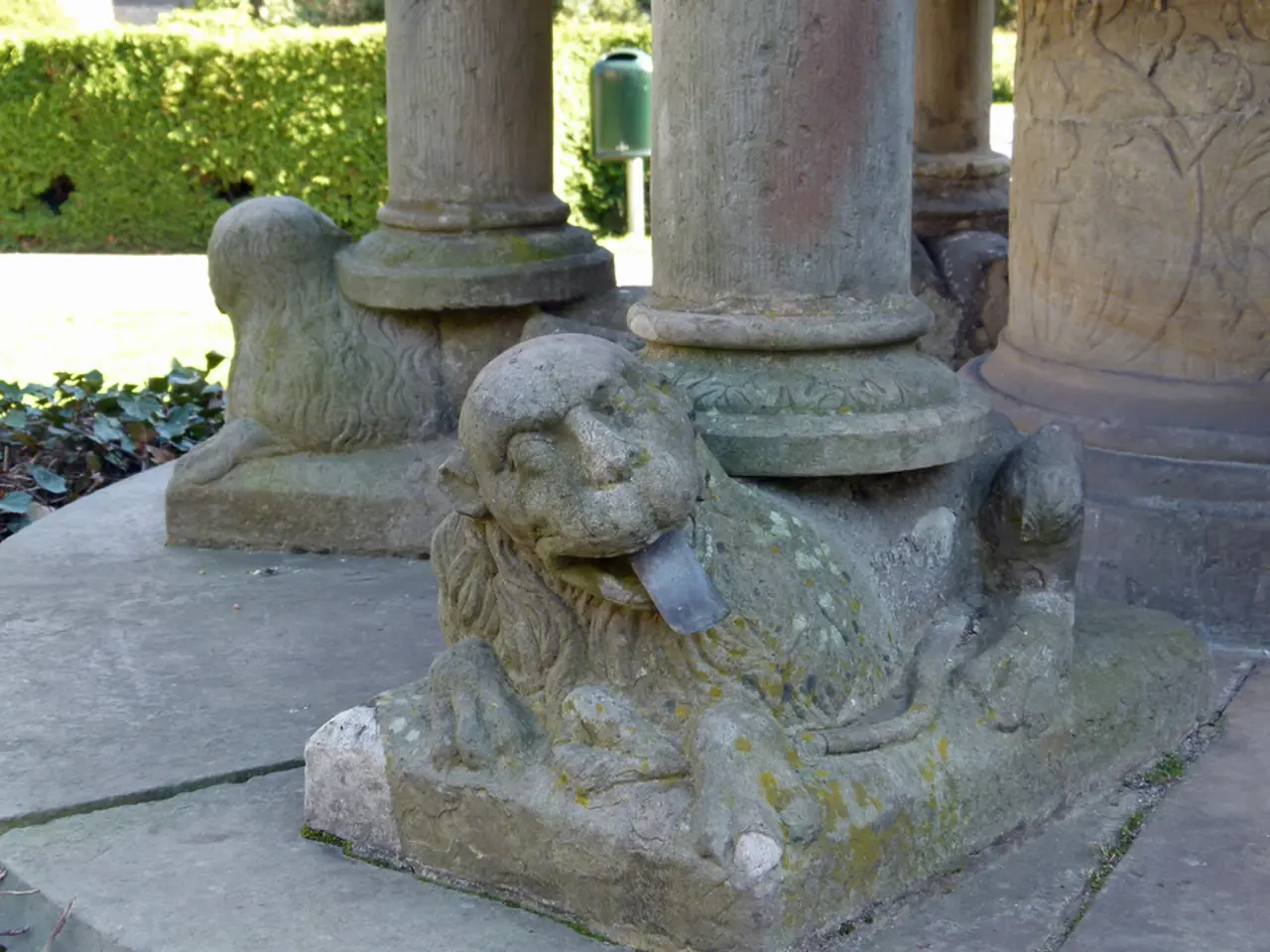Marking International Golden Lion Tamarin Day: Safeguarding Brazil's Endangered Forest Treasure
In the lush Atlantic coastal forests of Rio de Janeiro, Brazil, the golden lion tamarin (Leontopithecus rosalia) has seen a remarkable comeback from the brink of extinction. Once numbering fewer than 200 individuals in the wild in the 1970s, the current population stands at approximately 4,800, according to a recent survey.
The golden lion tamarin, with its striking golden fur and black mane, is listed as endangered on the IUCN Red List. The main threats to this small primate, growing up to 33 cm in length (excluding tail) and weighing between 500 and 700 grams, are habitat loss, fragmentation, and disease.
Conservation efforts to protect the golden lion tamarin and its habitat have been multifaceted. Key actions include reintroduction and translocation, habitat restoration and reforestation, protected areas management, community-based conservation and education, and international cooperative breeding and conservation programs.
Reintroduction and translocation programs have seen zoo-born golden lion tamarins being reintroduced into the wild, supplemented by the rescue and relocation of wild tamarins from small, vulnerable forest fragments to safer, unoccupied habitats. Habitat restoration and reforestation efforts focus on reconnecting fragmented forest patches, helping expand habitat and improve genetic exchange between groups.
Protected areas like Poço das Antas Biological Reserve and União Biological Reserve, alongside privately owned lands, contribute to habitat protection. Community-based conservation programs work with local communities to reduce threats such as illegal logging, poaching, and habitat fragmentation. Eco-tourism efforts also raise awareness and support for golden lion tamarin conservation.
International cooperative breeding and conservation programs, involving institutions like the National Zoological Park (Washington, D.C.), World Wide Fund for Nature, Toronto Zoo, and Philadelphia Zoo, have been instrumental in captive breeding, research, and public education, contributing to species recovery.
These combined efforts have led to a significant population increase from about 150 individuals in the late 1960s to the current estimate of 4,800. However, the species remains endangered due to ongoing habitat fragmentation and threats.
The golden lion tamarin's family-centered lifestyle, where males carry and care for the young, is rare and helps them survive. They live in family groups of 2 to 8 and spend most of their time in the forest canopy. Their beauty and social behavior make them a powerful symbol for forest conservation.
However, the habitat of the golden lion tamarin is vulnerable to climate change. Efforts like those of groups such as AMLD and the Rainforest Trust, which have reconnected broken forests by planting native trees and protecting areas like the Poço das Antas Reserve, are crucial in ensuring the continued survival of this unique species.
Sarah Tancredi, an experienced journalist and news reporter specializing in environmental and climate crisis issues, emphasises the importance of these conservation efforts. "The golden lion tamarin's recovery is a testament to what can be achieved when we work together to protect our planet," she says. "But there is still much work to be done to ensure their survival and the survival of other endangered species."
References:
[1] National Zoo. (n.d.). Golden Lion Tamarin. Retrieved from https://nationalzoo.si.edu/animals/golden-lion-tamarin
[2] World Wide Fund for Nature. (n.d.). Golden Lion Tamarin. Retrieved from https://www.wwf.org.uk/species/golden-lion-tamarin
[3] Toronto Zoo. (n.d.). Golden Lion Tamarin. Retrieved from https://torontozoo.com/animals/golden-lion-tamarin
[4] Philadelphia Zoo. (n.d.). Golden Lion Tamarin. Retrieved from https://www.philadelphiazoo.org/animals/golden-lion-tamarin
[5] Rainforest Trust. (n.d.). Golden Lion Tamarin. Retrieved from https://www.rainforesttrust.org/projects/golden-lion-tamarin-conservation-project/
- The environmental science community appreciates the significance of the golden lion tamarin's recovery as an ESG (Environmental, Social, and Governance) success story, a compelling demonstration of the impact of conservation efforts.
- To further combat habitat loss and fragmentation, education courses aimed at promoting sustainable living and home-and-garden development practices that minimize environmental impact can be beneficial.
- The reporting of environmental events plays a vital role in inspiring action toward conservation and climate change mitigation, with dedicated journalists like Sarah Tancredi contributing to public awareness and advocacy.
- One major aspect of conservation efforts for the golden lion tamarin has been community-based education, empowering local communities to make informed decisions that support environmental preservation and sustainable living.
- The conservation of the golden lion tamarin isn't limited to scientific developments; it also includes various events and lifestyle choices, such as opting for eco-friendly products and reducing waste at home and in our daily lives.
- The pioneering conservation work accomplished for the golden lion tamarin serves as a beacon for other endangered species, demonstrating the potential for collaboration between environmental organizations, governments, and private institutions to drive lasting change in promoting biodiversity and a sustainable future.




